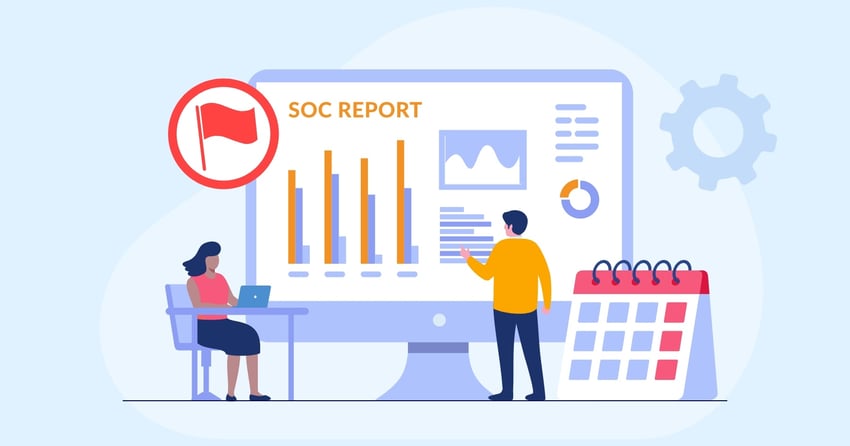There are a lot of steps that go into the initial due diligence process and ongoing monitoring of a vendor. One of the first things you’ll do is to request the vendor’s SOC reports, which may include both SOC 1 and SOC 2. Not only do you need these SOC reports from your vendors, but also from your critical subservice organizations, known as your fourth parties. After you receive these reports, it helps to understand some red flags that may indicate potential issues with your vendors.
Why Do You Need to Request a SOC 1 and SOC 2 Report?
There’s often some overlap of information between the SOC 1 and SOC 2 report, but there are also a few distinct differences to understand. A SOC 1 report focuses on financial controls and can include information on specific products and services that the vendor offers.
The SOC 2 report focuses on the vendor’s controls as they relate to one or more of the trust services criteria – security, availability, processing integrity, confidentiality, and privacy.
Noticing Red Flags in Vendor SOC Reports
Although SOC 1 and SOC 2 reports cover different topics, there are some potential red flags that can be found in both. As you review, pay attention to the following phrases:
- The Service Auditor’s Report section might include words like “inadequate” or “misrepresentation”.
- The Service Auditor may have provided a “Qualified Opinion”, which means that there are concerns that should be further reviewed.
Vendor SOC reports may also include a few of these other potential red flags:
- Unconventional format – SOC reports follow a standard format, and any deviations should be noted as an issue.
- Old date – It’s always important to review the most current SOC report available so you can properly assess controls. An old report will likely give you irrelevant information.
- Disorganized or irregular variations – Be on the lookout for SOC reports that have been modified or have missing pages. Other warning signs include inadequate testing, or even testing old evidence as new.
- Exceptions – Does the report contain any exceptions and are they repeated from previous reporting periods? If so, management should provide a response to those exceptions.
Now that you’ve completed your SOC report review and identified some potential red flags, what’s next? You’ll need to address your concerns and provide evidence of your due diligence process.

How to Address SOC Report Red Flags
Here are some ways to address the red flags found:
- Take a deeper dive into management’s response to the exceptions in the report. Confirm whether the response is adequate, perhaps by being resolved onsite or seeing evidence of mitigating controls.
- Ask the vendor for further clarification. If the exceptions are material, get an official response from the vendor.
- Implement a higher frequency monitoring schedule for the vendor, if necessary.
- Establish a good communication flow with the vendor.
Next Steps If You’re Still Unsatisfied
There may be occasions when you’re still uncomfortable with those red flags. Maybe the vendor hasn’t adequately addressed your concerns and you’re unsure of how to move forward.
Here are two potential solutions:
It’s important to recognize and understand some of the potential red flags that may be present in a vendor’s SOC report. Red flags won’t always mean trouble, but they’ll help you identify and address issues before they become a larger problem.





.gif?width=1920&name=Sample-Graphic-Animation%20(1).gif)




